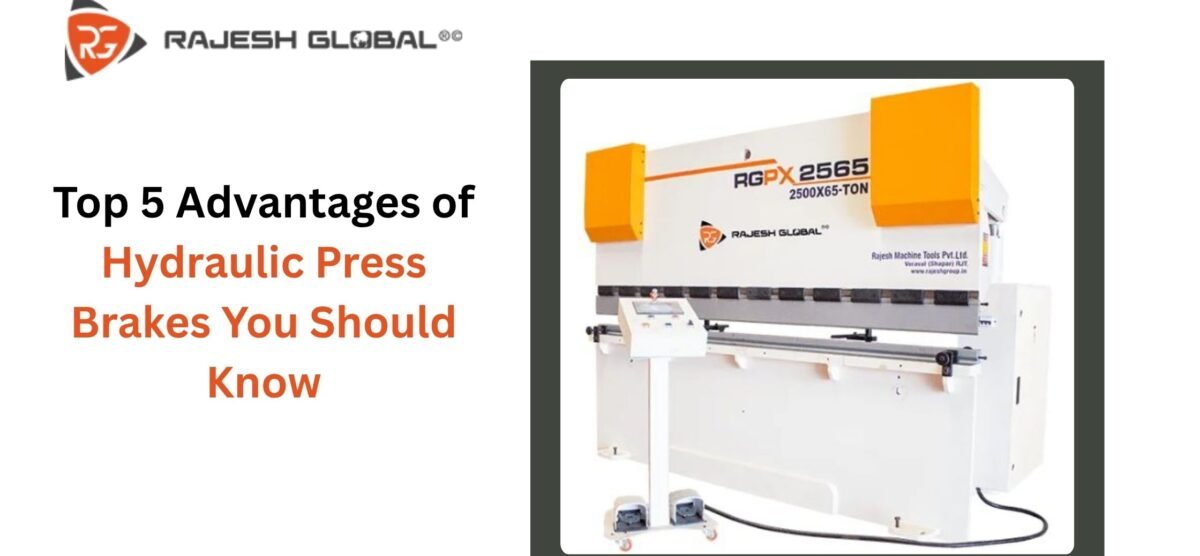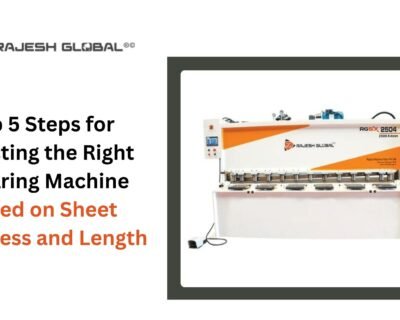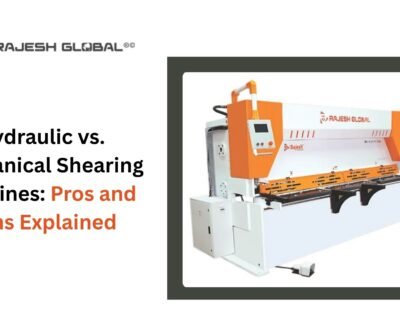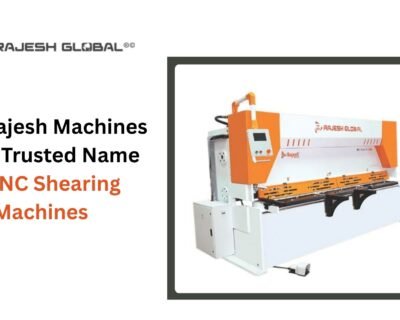Blog

Top 5 Advantages of Hydraulic Press Brakes You Should Know
Step onto any modern shop floor, and you’ll likely find the hydraulic press brake at the heart of the action. These machines, with their immense power and precision, have quietly revolutionized metal fabrication for decades. While newer technologies like all-electric press brakes are making headlines, the hydraulic press brake remains the backbone of heavy-duty manufacturing—especially in India’s fast-growing industrial landscape.
What makes hydraulic press brakes so indispensable? It’s not just brute force. These machines combine time-tested engineering with advanced controls, creating a platform that’s both rugged and remarkably adaptable. As one fabrication expert notes, “Hydraulic press brakes have been the workhorses of metal fabrication, with decades of proven use in industry.” Their ability to handle thick, high-strength materials and deliver consistent results has made them the go-to choice for manufacturers who can’t afford compromises.
For Rajesh Machine Tools, the hydraulic press brake isn’t just another product—it’s a signature of the company’s commitment to empowering manufacturers with reliable, efficient, and future-ready solutions. As we explore the top five advantages of hydraulic press brakes, you’ll see why these machines remain a strategic investment for entrepreneurs eager to scale their operations.
Precision and Consistency: The Cornerstone of Quality Fabrication
Contents
- 1 Precision and Consistency: The Cornerstone of Quality Fabrication
- 2 Versatility and Adaptability Across Diverse Applications
- 3 Enhanced Safety and Operator-Friendly Features
- 4 Cost Efficiency Through Energy Savings and Reduced Maintenance
- 5 Conclusion: Why Choosing Rajesh Machine Tools’ Hydraulic Press Brakes Is a Strategic Investment
In metalworking, precision isn’t just a buzzword—it’s the difference between profit and scrap. Hydraulic press brakes excel in this arena, consistently achieving tolerances as tight as ±0.5° in bend angle and ±0.1–0.2 mm in linear positioning when properly maintained. This level of accuracy is not an accident; it’s the result of decades of engineering refinement and the integration of CNC controls that automate every aspect of the bending process.
A key advantage is the uniform force distribution provided by hydraulic systems. Synchronized cylinders and advanced ram alignment ensure that every bend is identical, no matter the length or thickness of the material. “Enhanced accuracy reduces scrap rates and ensures reliable fits during assembly, crucial for efficient manufacturing workflows,” explains a leading industry analyst. With Rajesh Machine Tools’ CNC hydraulic press brakes, operators can perform complex bends with repeatability that rivals even the most advanced electric models.
But it’s not just about the numbers. The real-world impact is profound: less material waste, fewer rejected parts, and a smoother assembly process. For entrepreneurs, this translates directly into higher margins and a reputation for quality that opens doors to new business.
Versatility and Adaptability Across Diverse Applications
The Chameleon of the Shop Floor
Hydraulic press brakes are the Swiss Army knives of metal fabrication. Their ability to handle a vast range of materials—from delicate aluminum sheets to thick steel plates—makes them indispensable for industries as varied as automotive, aerospace, construction, and appliance manufacturing.
- Material Mastery: Whether you’re working with mild steel, stainless, or exotic alloys, a hydraulic press brake can be tuned for the perfect bend, every time.
- Flexible Tooling: Quick-change tooling and programmable back-gauges enable rapid shifts between jobs, supporting both high-volume production and custom, low-batch runs.
- Complex Bends: With CNC integration, intricate multi-step bends are executed with ease, reducing setup time and minimizing human error.
“Hydraulic press brakes are favored in settings where heavy-duty bending is required. A hydraulic press brake can maintain consistency and power across large batches and thick materials,” observes a respected industry resource. This adaptability is a game-changer for manufacturers looking to diversify their product offerings or respond quickly to shifting market demands.
For those curious about the broader landscape of press brake technology, exploring the differences between hydraulic and electric systems is essential. Notably, hydraulic press brakes excel in applications demanding high tonnage and reliability, while electric models offer speed and energy efficiency for lighter tasks.
Enhanced Safety and Operator-Friendly Features
Safety First, Productivity Always
The sheer power of a hydraulic press brake demands respect—and robust safety measures. Modern machines are equipped with a suite of features designed to protect both operators and equipment, without sacrificing productivity.
- Light Curtains and Laser Guards: These sensor-based systems create invisible barriers around the working area. If a hand or tool crosses into the danger zone, the machine halts instantly, preventing accidents before they happen.
- Two-Hand Control: Operators must use both hands to activate the press, ensuring their hands are clear of moving parts during operation.
- Emergency Stop Buttons: Strategically placed for quick access, these buttons provide an immediate shutdown in case of unexpected hazards.
- Overload Protection: Advanced systems monitor force and pressure, automatically stopping the machine if it approaches unsafe limits.
- Interlocking Guards: Physical barriers prevent access to hazardous zones while the machine is running, only allowing entry when it’s safe.
As one safety expert puts it, “Hydraulic press brake machines are designed to operate with utmost precision, but their immense force can pose significant risks if proper safety measures are not implemented.” That’s why Rajesh Machine Tools integrates these features as standard, ensuring that every machine not only meets but exceeds industry safety standards. The result? A safer workplace, fewer accidents, and peace of mind for entrepreneurs and their teams.
Cost Efficiency Through Energy Savings and Reduced Maintenance
Skimmable Cost and Maintenance Insights
- Targeted Energy Use: Hydraulic press brakes consume power primarily during the bending process, unlike older models that ran continuously. This targeted energy use slashes electricity bills and reduces environmental impact.
- Hybrid Systems: The latest hybrid press brakes combine electric motors for precision with hydraulic systems for power, achieving up to 73% energy savings compared to traditional machines.
- Reduced Wear and Tear: Fewer moving parts and improved hydraulic circuits mean less maintenance, lower risk of breakdowns, and longer machine life.
- Smart Technology: Integrated motion control and predictive maintenance features help operators optimize energy consumption, monitor machine health, and prevent costly downtime.
“Energy-efficient press brake technologies are transforming the manufacturing industry by cutting down on energy use and operational expenses,” notes a leading authority in the field. For manufacturers focused on sustainability, these advancements aren’t just about saving money—they’re about building a greener, more competitive business.
Zinger: Did you know that hybrid press brakes can reduce energy consumption by up to 73%? That’s not just a win for your bottom line—it’s a leap toward a more sustainable future.
Conclusion: Why Choosing Rajesh Machine Tools’ Hydraulic Press Brakes Is a Strategic Investment
The hydraulic press brake’s enduring popularity isn’t a fluke—it’s the result of relentless innovation, robust engineering, and a relentless focus on real-world manufacturing needs. For entrepreneurs, the advantages are clear: unmatched precision, unrivaled versatility, industry-leading safety, and cost efficiency that pays dividends year after year.
Rajesh Machine Tools stands at the forefront of this technology, delivering hydraulic press brakes that embody the best of tradition and innovation. Their machines empower manufacturers to tackle new challenges, expand their capabilities, and build businesses that thrive in a competitive global market.







